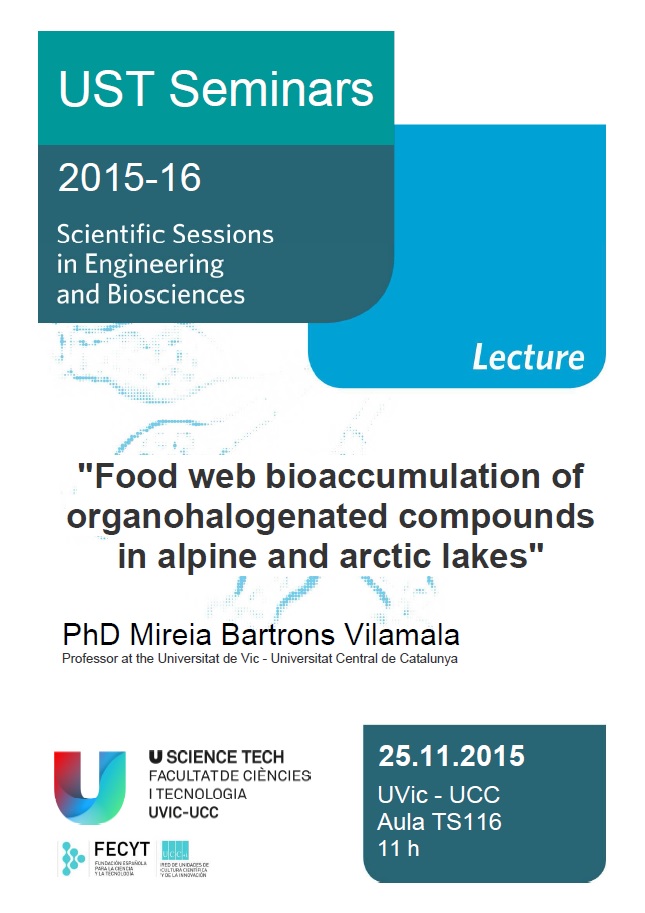Date/Time
Date(s) - 25/11/2015
11.00 - 12.00
Location
Aula TS116
Category(ies)
Title: “Food web bioaccumulation of organohalogenated compounds in alpine and arctic lakes”
Mireia Bartrons Vilamala – Professor at the Universitat de Vic – Universitat Central de Catalunya
Mireia’s research interests focus on the effects of global change on food web structure and function of freshwater and terrestrial ecosystems; and in particular, in the use of organic compounds—such as persistent organic pollutants, stable isotopes or direct metabolic state markers—as ecological tracers of ecosystem, community and species level processes within a landscape framework.
Mireia obtained her PhD at the University of Barcelona, under the supervision of Profs. Jordi Catalan and Joan O. Grimalt within the European project EUROLIMPACS. This thesis got the PhD thesis award by the Iberian Society of Limnology (best PhD during the Biennial 2008/2010). On 2010/13, she was a postdoctoral researcher at the University of Wisconsin – Madison (USA) collaborating with Profs. Anthony R. Ives, M. Jake Vander Zanden and Claudio Gratton, along with a multidisciplinary team from the University of Wisconsin-Madison and the University of Iceland.On 2014/15 she was the junior coordinator of the ERC Synergy Grant IMBALANCE-P at CREAF-UAB-CSIC collaborating with Prof. Josep Peñuelas and his team (Global Ecology Unit), where she focused on the effects of phosphorus (P) shortages and nitrogen (N) to P stoichiometric imbalance at organism and community level through the use of metabolic state markers, stable isotopes and organic pollutants.
Date: 25th of November at 11:00h.
Place: TS116
Abstract: Persistent organic pollutants (POPs) are toxic substances usually produced for use in agricultural, industrial, and domestic applications. Because of their long-range atmospheric transport capacity, POPs are distributed worldwide. The global distillation theory predicts that there will be a temperature-dependent partitioning of these low volatility compounds in the environment. Concentration patterns of POPs in agreement with the theory have been observed for different environmental compartments, such as lake sediments and mosses, and along altitudinal and latitudinal gradients. In this talk, I will review the state of the question of POPs bioaccumulation in aquatic and terrestrial alpine and arctic lake food webs and present some hypotheses concerning processes worthy of investigation.


